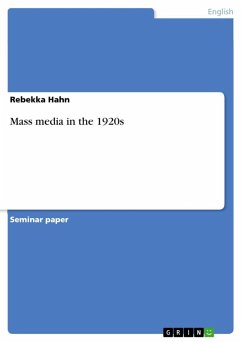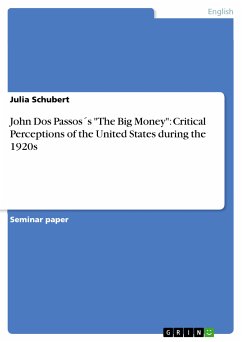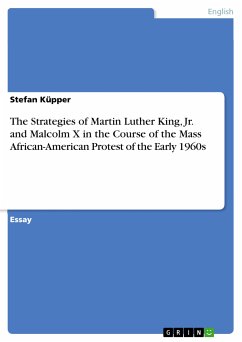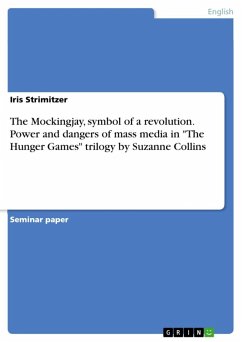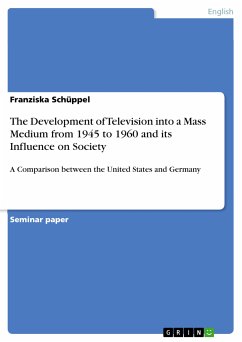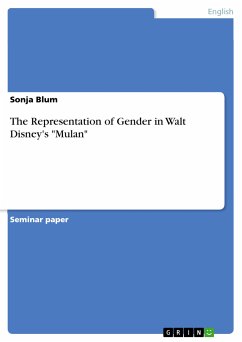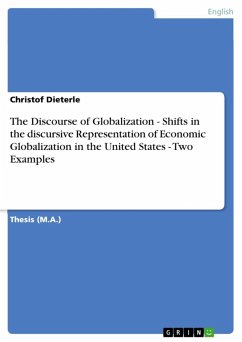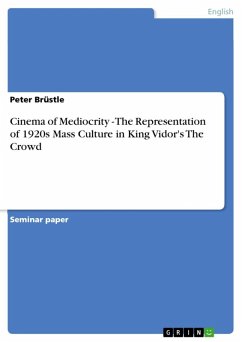
Cinema of Mediocrity - The Representation of 1920s Mass Culture in King Vidor's The Crowd (eBook, ePUB)

PAYBACK Punkte
0 °P sammeln!
Seminar paper from the year 2005 in the subject American Studies - Culture and Applied Geography, grade: 1,3, University of Freiburg (Institut für Nordamerikastudien), course: Literature and Culture of the 1920s, language: English, abstract: What is it that cinema-goers anticipate when flocking weekday nights to the Cinemaxxes and Cinestars throughout the world? And what expected the audiences of the 1920s during the heyday of the silent film area, when 100 million people a week were drawn to the movie palaces in America? Bare amusement? Weekend enjoyment? Or rather artistically challenging a...
Seminar paper from the year 2005 in the subject American Studies - Culture and Applied Geography, grade: 1,3, University of Freiburg (Institut für Nordamerikastudien), course: Literature and Culture of the 1920s, language: English, abstract: What is it that cinema-goers anticipate when flocking weekday nights to the Cinemaxxes and Cinestars throughout the world? And what expected the audiences of the 1920s during the heyday of the silent film area, when 100 million people a week were drawn to the movie palaces in America? Bare amusement? Weekend enjoyment? Or rather artistically challenging avant-garde films with politically provocative messages? What we mostly expect of the movies, is to satisfy a longing for something new and extraordinary. Still today and also at the beginning of the classic Hollywood era, movies have been attractive in that they have offered an alternative reality to that of actual ordinary life; be it through romance, action, exotic scenarios or mere entertainment. Especially in the 1920, with the establishment of Hollywood, movie-going became an enormously popular form of modern mass entertainment. King Vidor's The Crowd (1928), however, is a rare exception. Its main interest is not the unknown or exotic, it does not function as an alternative reality. In contrast to the mainstream Hollywood productions of the 1920s, the film concentrates on 'normality' and plainness. Thus, what The Crowd offers is a stylized and satirized portrayal of the everyday lives of exactly the audiences who where watching the film. In doing so, the film does not charm or arouse passionate feelings. On the contrary, it functions as a mirror and leaves the spectators frustrated about the meaninglessness of modern life and their own ambitions for success and consumption. With its depiction of everyday middle class life and its critique of modern mass culture, The Crowd also challenges reductionist perspectives of the 'roaring twenties' as a permanent orgy, of wild flappers and frenzied Jazz parties, as is still prevalent in popular discourse today. The alternative view it offers, is that of a decade characterized by rising corporate power, the pressure to adjust and the powerlessness of the individual against an increasing standardization in the work and leisure sphere. Thus, in this paper I will examine, how the The Crowd differs from the mainstream Hollywood productions of the time and in what way Vidor's film can be interpreted as a critique of 1920s mass culture. [...]
Dieser Download kann aus rechtlichen Gründen nur mit Rechnungsadresse in A, B, BG, CY, CZ, D, DK, EW, E, FIN, F, GR, HR, H, IRL, I, LT, L, LR, M, NL, PL, P, R, S, SLO, SK ausgeliefert werden.




